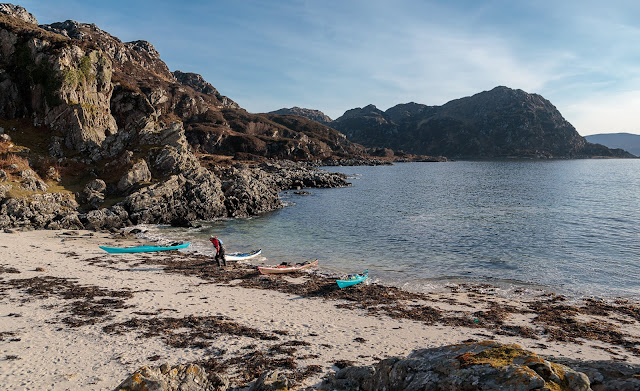This beautiful book is an illustrated guide to over 150 beaches scattered round the 19,000 km coast line of the Scottish mainland, the Hebrides and the Northern Isles.
I particularly liked the introduction in which the author discusses beach safety, how to visit (responsible access), types of beach, seascape and geology (contributed by the author’s husband who is an oceanographer), how and when to travel (this includes valuable advice for those who choose to travel by car or camper van rather than by foot, cycle or public transport). I especially liked why the author has chosen the beaches included in the book.
“The reasons for a beach being chosen for this book were multifactorial, based on its beauty, uniqueness, location and importantly whether it has the infrastructure in place to sustain tourism.”
I applaud the author for this approach. Several of my favourite beaches are not in this book and I am pretty sure the author knows them well. However, each has some sort of issue that would be exacerbated by a significant increase in visitor numbers, such as threat to wildlife habitat or access problems including car parking and serious erosion of access paths. This approach might be considered by some as elitist but the publication of a recent guide to mountain bothies has already resulted in the closure of two bothies as a result of overuse and indiscriminate parking. Another example of attracting too many people to a limited natural resource is the Fairy Pools in the Skye Cuillin which have now been well and truly "Instagrammed". In contrast, this book will disperse visitors over a very wide area. In doing so, it serves as a wonderful introduction to Scottish beaches and leaves the visitor the joy of exploration and discovery of “new” beaches in each area.
Each beach is illustrated with a photo and descriptive text. There are also key facts including access, toilets and activities. In a guide like this there is not enough room for small scale maps of individual beaches so, for many of the less accessible beaches, an OS map will be useful and the key facts include Lat/Long co-ordinates (for GPS input) and OS map grid references. There are large scale maps showing the location of multiple beaches, which will be invaluable when planning a trip to an area.
This book will have wide appeal to walkers, swimmers, cyclists, kayakers and paddle boarders. I recommend it thoroughly.
PS I have contributed a photo of one of the remoter beaches in the book. The publisher contacted a friend, who is an accomplished photographer and author of guidebooks to see if he had a photo of this beach. His reply was “If anyone randomly has a photo of an obscure and remote 1km-long beach in the Western Isles sitting on his hard drive, it’ll be him…” I guess that qualifies me to both review the book and comment on the choice of included beaches.
The Beaches of Scotland, Dr Stacey McGowan Holloway, Vertebrate Publishing, publication date 7/4/2022, ISBN 978183981078






















































